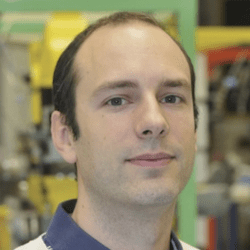MILA
RO1 : Fibre reinforcements and composite applications
Activities
This research operation deals with oriented long-fibre composites, from the scale of the fibre to that of the structure. Dry fibrous reinforcements or cables are also taken into account in this research operation.
The aim is to characterise, model and/or simulate the behaviour of these objects, in order to better understand the role of the architecture in the development of non-linear and dissipative phenomena, and to provide this understanding for the most accurate dimensioning of structures. These three aspects can appear in an integrated way, focusing on a specific material, or decoupled, to focus on a method or a means.
At the experimental level, it is a question of setting up rich tests, dedicated to the characterisation of elementary mechanisms under thermo-mechanical loading. Specific set-ups (peeling, etc.) and in-situ solicitations (SEM, tomograph, etc.) are therefore used or developed.
Behavioural models integrating different competing degradation/hardening mechanisms are developed, often on the basis of anisotropic damage mechanics. In addition, simplified structural models are worked on in order to reach a level of understanding of the interactions between mechanisms, taking into account statistical aspects...
Numerical models and computational strategies are also developed to account for these very heterogeneous or even granular media. Taking into account the frictional contact in fibrous reinforcements or the modelling of composites at the fibre scale are among the themes.
These various actions are carried out in strong partnership with industrialists in the transport field, mainly (joint laboratories CompInnov and SteerLab (metallic and textile cord reinforcements for tyres), modelling of 3D interlock weaves for composite parts for aeronautics (Safran)).
Manager

MILA team
Emmanuel BARANGER
Research Director
Head of the Fibrous Reinforcements and Composites Applications research operation
